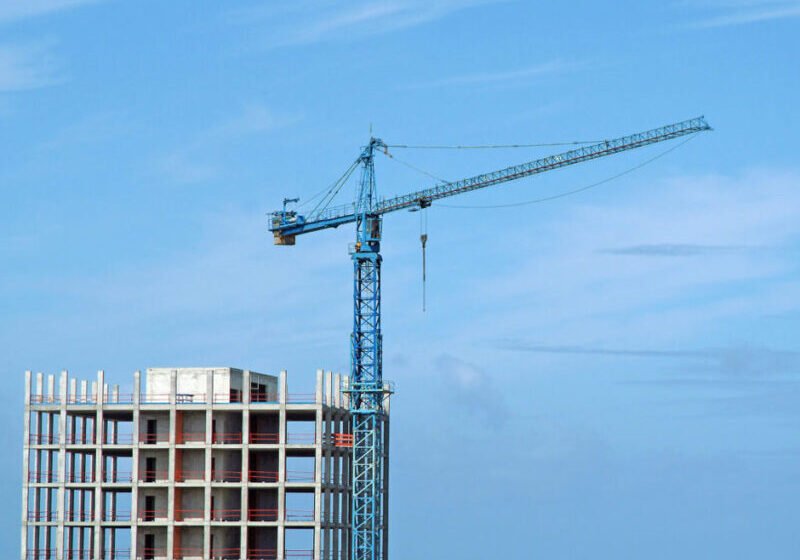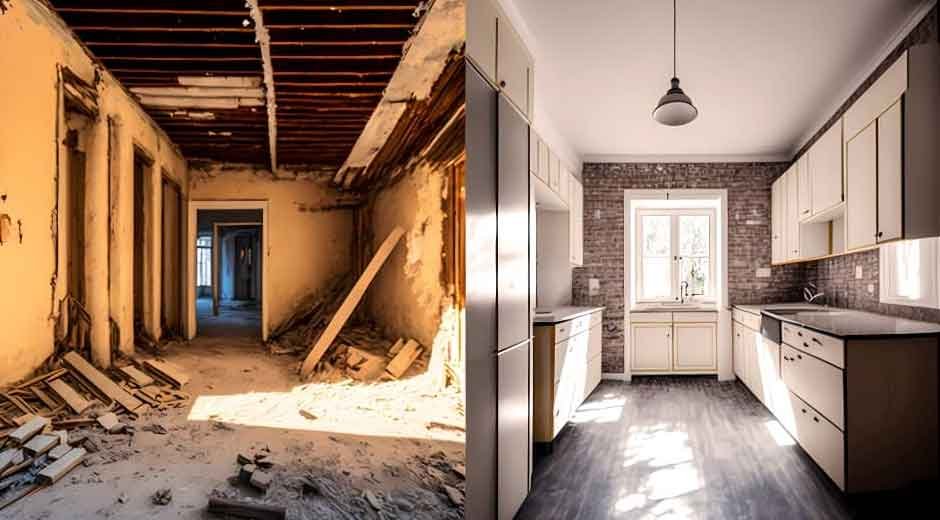Applications of Tower Crane: Essential Uses in Modern Construction

Fundamental Roles of Tower Cranes in Construction
Tower cranes play an essential role in the construction industry. They help to lift heavy loads efficiently and are key to building tall structures. Their reliability and safety are crucial in making construction processes smoother and more effective.
Lifting and Material Handling
Tower cranes excel in lifting and moving heavy materials. Their design allows them to handle significant weights, which is crucial for large projects. By using a hoist mechanism, they can lift materials like steel beams and concrete panels to great heights.
- Lifting Capacity:Most tower cranes can lift loads ranging from a few tons to over twenty tons, depending on the model.
- Reach:They have long horizontal arms that allow them to cover a wide area, making it easy to move materials across the construction site.
This capability speeds up the construction process, allowing you to get materials where you need them quickly.
Supporting High-Rise Building Construction
In high-rise building construction, tower cranes are indispensable. They provide a simple and effective way to transport heavy materials to upper floors. This is important in tall structures where traditional cranes might not fit.
- Vertical Lifting:Tower cranes can reach impressive heights, making them ideal for skyscraper projects.
- Precision:They allow for precise placement of materials, which is vital in maintaining the structural integrity of buildings.
By supporting the vertical transportation of heavy loads, tower cranes ensure that high-rise projects are completed safely and efficiently.
Ensuring Safe Use and Reliability
Safety and reliability are key factors in using tower cranes. They are designed with various safety features to protect workers and materials on the site. Regular maintenance and inspections are crucial to keep these machines operating safely.
- Safety Features:Most tower cranes come equipped with load limiters and emergency shutoff systems.
- Reliability Standards:Operators are trained to follow strict safety protocols, ensuring that tower cranes operate smoothly.
By focusing on safe use and maintaining reliability, you help create a safer work environment in the construction industry. Proper use of tower cranes reduces accidents and enhances efficiency, making your construction projects successful.
Types of Applications for Tower Cranes
Tower cranes play a crucial role in various construction projects. They are particularly useful for lifting heavy materials high above ground. Here are some common applications where tower cranes excel.
High-Rise and Urban Construction Projects
In urban settings, you often see tower cranes at work on high-rise buildings. Their tall and sturdy design allows them to reach impressive hook heights, typically between 50 to 300 feet. This is essential for projects where lifting large steel beams and concrete panels is necessary.
These cranes can handle significant loads, which is vital when constructing multi-story buildings. You might notice how efficiently they move materials around the site, saving time and reducing labor costs. The ability to rotate 360 degrees gives them a wide range of movement, optimizing workflow.
Infrastructure and Large-Scale Developments
Tower cranes are also key players in infrastructure projects. They help build bridges, airports, and stadiums, where heavy lifting is a must. Their high lifting capacity makes it easier to manage large materials like steel trusses and concrete slabs.
In these large-scale developments, multiple tower cranes can work together. This coordination allows for a smooth assembly of complex structures. You might observe how cranes positioned at different angles can access various parts of a project simultaneously.
Specialized Lifting Scenarios
Sometimes, tower cranes are used in specialized lifting scenarios. For example, they can lift large equipment, such as generators or HVAC units, onto rooftops. This application is crucial for projects like hospitals or commercial buildings, where the placement of heavy machinery is vital.
These cranes can adapt to unique site conditions, making them versatile tools. Whether you are hoisting unusual loads or reaching high elevations, tower cranes provide the solutions you need. Their efficiency makes them a popular choice in the construction industry.
Key Features Enhancing Tower Crane Applications
Tower cranes are designed with advanced features that make them versatile and efficient on construction sites. Two important features include luffing and slewing functions, as well as self-erecting and hammer head designs. These capabilities allow for improved lifting operations and adaptability to different building needs.
Luffing and Slewing Functions
Luffing cranes have a unique ability to adjust the angle of their jib. This helps you lift materials safely over obstacles or tight spaces. With a hydraulic cylinder, the jib can be raised or lowered, allowing for precise control when moving loads.
Slewing, on the other hand, refers to the crane’s ability to rotate around its base. This feature enables you to move materials horizontally without repositioning the crane. Combining these functions enhances efficiency, reduces time delays, and optimizes the workflow on your construction site.
Self-Erecting and Hammer Head Designs
Self-erecting cranes are perfect for smaller job sites. They can be easily transported and set up without needing additional equipment. You can quickly assemble this type of crane, which saves both time and labor costs during the initial stages of construction.
Hammer head cranes feature a horizontal crossbeam that provides increased stability. This design supports heavy lifting while maintaining balance. You can take advantage of their strength and reach for various building projects, especially high-rise constructions where precision is crucial.
Technological Advancements and Automation
Recent developments in tower cranes focus on enhancing safety, productivity, and energy efficiency. Key advancements, such as anti-collision systems and automation, play a vital role in improving construction operations.
Anti-Collision Systems for Safety
Anti-collision systems are crucial for maintaining safety on busy job sites. These systems use sensors and cameras to monitor the surroundings.
When a tower crane moves near another crane or obstacles, the system sends alerts to operators. This helps prevent accidents that could cause injuries or delays.
Additionally, many systems can automatically slow down or halt the crane if it gets too close to a danger zone. This feature ensures that both workers and equipment remain safe, allowing for smoother operations.
Automation and Productivity Improvements
Automation greatly enhances the productivity of tower cranes. With advanced technology, cranes can now perform tasks like lifting and moving materials without much human input.
Automated systems reduce the chances of human error, leading to more precise movements. This precision saves time and cuts labor costs.
Moreover, remote operation allows operators to control cranes from a distance. This increases flexibility and reduces safety risks by keeping operators away from hazardous zones. Many construction companies find that using automated cranes leads to faster project completion.
Energy Efficiency in Modern Tower Cranes
Modern tower cranes incorporate energy-efficient technologies that help reduce operational costs. These cranes often utilize electric power instead of diesel, which lowers fuel expenses and minimizes emissions.
Features like variable speed drives allow cranes to adjust energy usage based on load requirements. This not only saves energy but also extends the lifespan of equipment.
Additionally, some cranes are designed with lighter materials, making them easier to operate. This change contributes to less energy consumption during lifting and transport. As energy efficiency continues to improve, your construction projects can be less costly and more environmentally friendly.
Major Manufacturers and Market Trends
In the tower crane market, several key manufacturers lead the way with innovative designs and features. Demand for these cranes is rising, driven by ongoing construction projects globally. Here’s a closer look at some major players and the trends shaping this industry.
Liebherr and Its Innovations
Liebherr stands out in the tower crane market due to its advancements in technology. They focus on creating cranes that offer greater lifting capacity and efficiency.
Key Innovations:
- Automatic Height Adjustment: This feature helps optimize the crane’s performance based on site conditions.
- Eco-Friendly Engines: Liebherr emphasizes sustainability with engines that reduce fuel consumption and emissions.
Their commitment to safety also sets them apart, with enhanced features that ensure secure operations on job sites.
Terex, SANY, and Zoomlion
Terex, SANY, and Zoomlion are also significant players in the market. Each brings unique strengths.
- Terexoffers a wide range of cranes known for their durability and performance under tough conditions.
- SANYis recognized for its competitive pricing and rapid growth, appealing to budget-conscious contractors.
- Zoomlioninvests heavily in technology, leading to cranes that are efficient and user-friendly.
These companies are constantly developing new technologies and features to gain market share.
Market Demand for Tower Cranes
The demand for tower cranes is increasing as construction projects grow globally. The market was valued at about USD 5.97 billion in 2023, projected to reach USD 8.76 billion by 2032.
Factors Driving Demand:
- Sustained urbanization leading to more high-rise buildings.
- Infrastructure projects requiring heavy lifting equipment.
The push for taller buildings and complex structures keeps the market vibrant. Companies are responding by enhancing their product lines to meet evolving customer needs.
Regional Applications and Environmental Factors
Tower cranes play an essential role in construction across different regions, especially in Europe. Understanding their applications and how they adapt to environmental factors is key for safe and efficient operations.
Tower Crane Use in Europe
In Europe, tower cranes are commonly used for various construction projects. These include residential buildings, commercial spaces, and large infrastructure. Cities like London, Berlin, and Paris often feature tower cranes due to their ability to lift heavy materials high above busy streets.
You’ll find that the design and height of these cranes vary based on local regulations and building heights. European cities also emphasize safety features, like load monitoring systems, to ensure worker safety.
The versatility of these cranes allows them to be set up in tight spaces, making them ideal for urban development. Moreover, they often use advanced technologies, such as remote controls, enhancing operational efficiency.
Adapting to Adverse Weather Conditions
Adverse weather can impact crane operations significantly. In places with harsh winters or strong winds, special precautions are essential.
You need to consider wind speed limits when operating a tower crane. For instance, if wind speeds exceed 20 miles per hour, cranes may need to halt operations. Operators often monitor weather forecasts closely to prepare for sudden changes.
In snowy or icy conditions, the crane’s capabilities may be reduced. Proper maintenance and de-icing techniques are crucial to keep cranes functional. This ensures safety and minimizes delays on construction projects.
By understanding these weather-related challenges, you can enhance safety and efficiency during crane operations.





